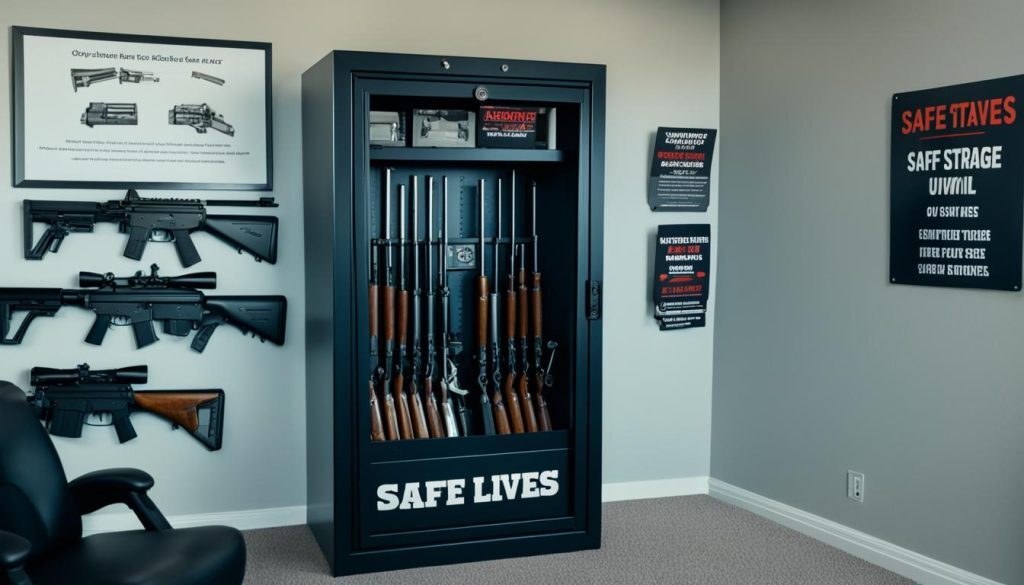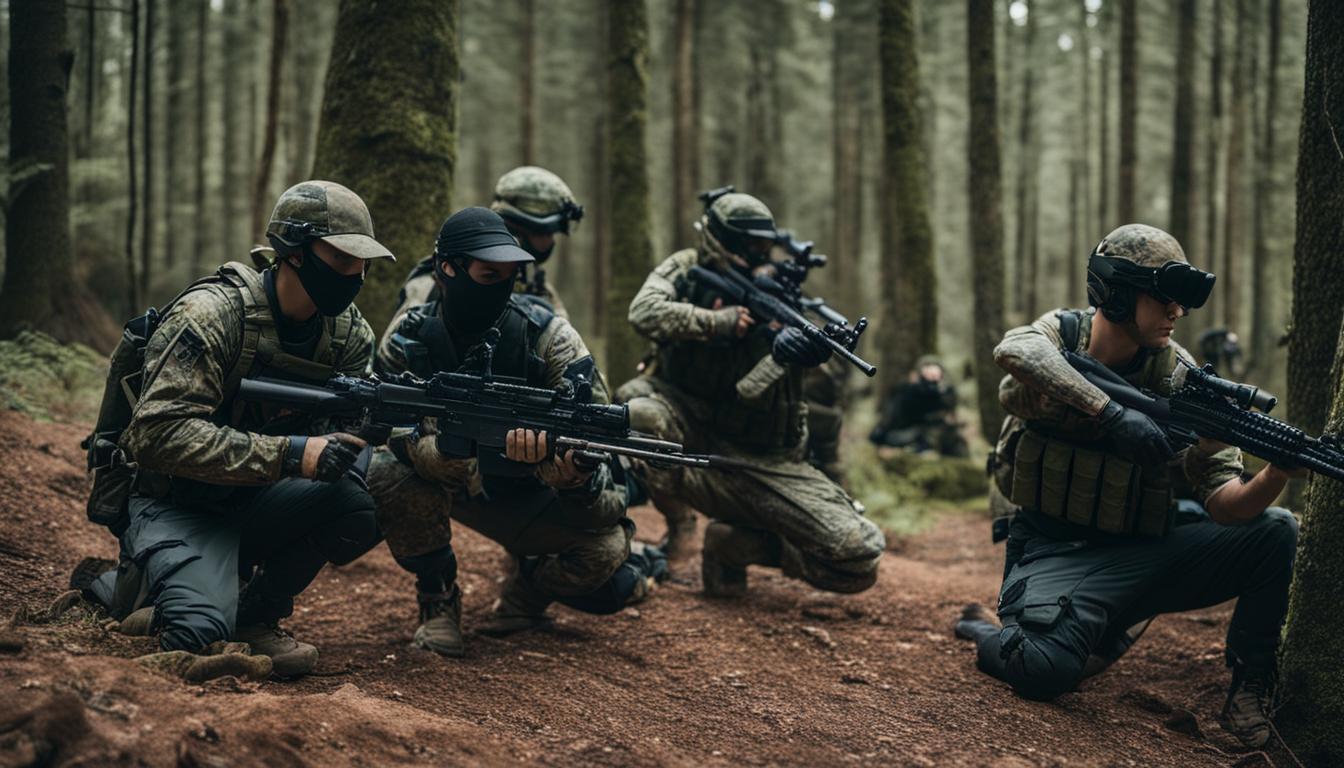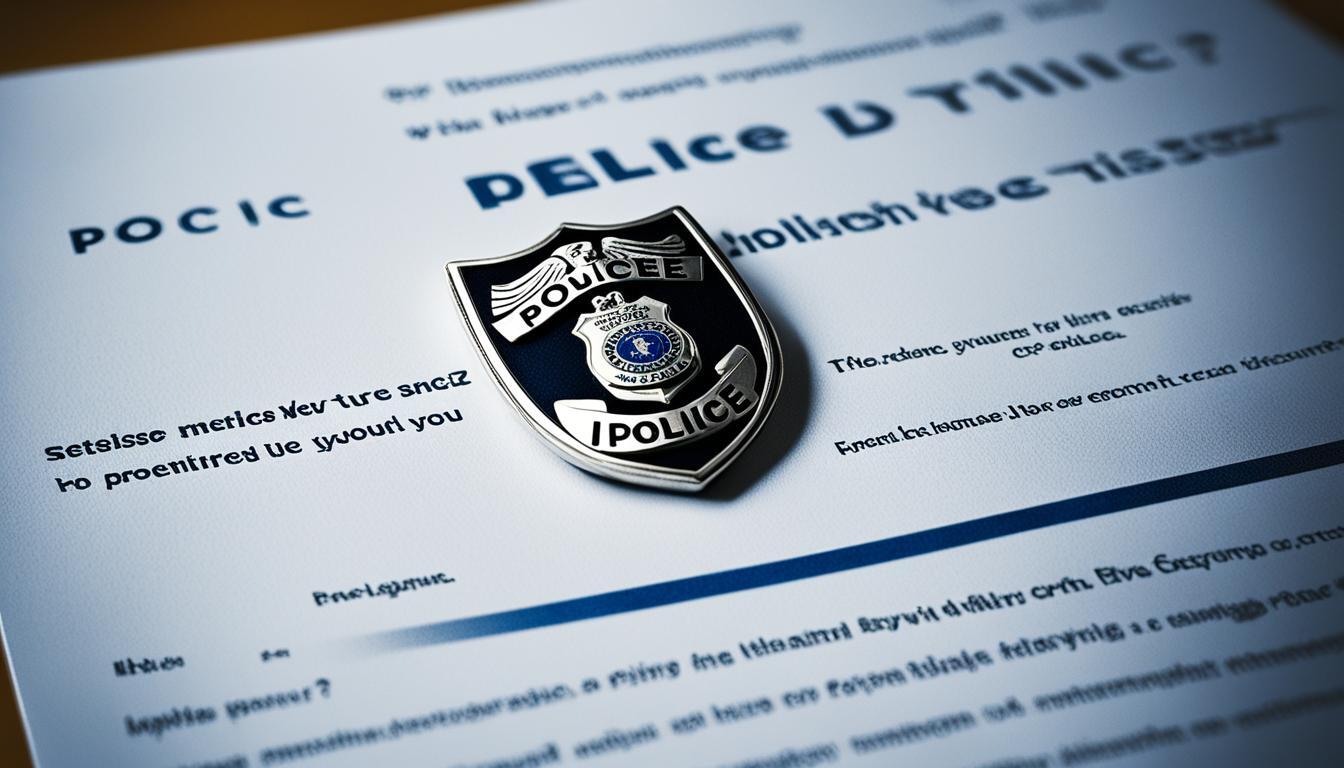Legally Transporting Firearms in Canada
In Canada, it is crucial to understand and comply with the regulations regarding the storage and transportation of firearms. Ensuring safety and legality when transporting firearms is of utmost importance to avoid serious consequences, both legally and for public safety. Let’s delve into the key details and requirements for legally transporting firearms in Canada.
Key Takeaways:
- Non-compliance with Canadian firearm transport laws can have severe consequences.
- Firearm storage regulations must be followed to prevent accidents, theft, or unauthorized access.
- Transporting firearms safely involves ensuring firearms are unloaded and properly secured.
- Displaying firearms safely requires adherence to specific guidelines.
- Penalties for non-compliance can range from administrative sanctions to criminal charges.
Storing Firearms Safely
When it comes to storing firearms safely in Canada, there are specific requirements that firearm owners must follow to ensure the security of their firearms and prevent potential accidents or unauthorized access. Whether you own non-restricted, restricted, or prohibited firearms, adhering to the storage regulations is crucial for maintaining the safety of your household and the wider community.
For non-restricted firearms, such as most hunting rifles and shotguns, it is important to unload them and store them securely. This can be achieved by keeping them in a locked cabinet, container, or room that is difficult to break into. Additionally, ammunition should be stored separately or locked up in the same container as the firearms. By following these guidelines, you can significantly reduce the risk of accidents or incidents involving non-restricted firearms.
Restricted and prohibited firearms have more stringent storage requirements due to their potential danger and increased risk. In addition to being unloaded, these firearms must be stored using secure locking devices. Secure locking devices can include trigger or cable locks that prevent unauthorized use or access to the firearm. The storage location for restricted and prohibited firearms should also provide an extra level of security, such as vaults, safes, or specially modified rooms.
It is crucial for firearm owners to carefully read and understand the storage requirements set by the Canadian government. Failure to comply with these regulations may result in legal consequences. By storing firearms safely in accordance with the guidelines, you not only promote responsible firearm ownership but also help prevent theft, accidents, or access to firearms by unauthorized individuals.

Transporting Firearms Safely
When it comes to transporting firearms in Canada, it is crucial to do so safely and legally. Following the proper guidelines ensures the safety of yourself and those around you, as well as compliance with Canadian firearm transportation regulations.
For non-restricted firearms, such as hunting rifles and shotguns, they must be unloaded during transportation. This means removing any ammunition from the firearm and ensuring the chamber and magazine are empty. It is advisable to store the ammunition separately or use a locked container to transport it securely.
Restricted and prohibited firearms have additional requirements for safe transportation. Along with being unloaded, they must also have secure locking devices attached, such as trigger locks or cable locks. In addition, these firearms should be stored in sturdy, non-transparent containers to prevent any visibility of the firearm from the outside. This ensures that the transportation of restricted and prohibited firearms remains discreet and complies with regulations.
It is important to note that for automatic firearms, such as fully automatic firearms or guns converted to automatic, the bolts or bolt carriers should be removed during transportation. This prevents the firearm from being readily operable. The bolts or bolt carriers should be securely stored separately from the firearm during transport.
To transport restricted or prohibited firearms, individuals must obtain an Authorization to Transport (ATT) from the Canadian Firearms Program. The process involves contacting the designated number to request the authorization, which allows for the transportation of these firearms to specific locations outlined in the ATT. It is essential to obtain this authorization and follow the transportation guidelines to comply with the regulations and maintain the legality of transporting restricted or prohibited firearms.
By following these transportation guidelines, you can ensure the safe and legal transport of firearms across Canada. Remember, the responsible and secure transportation of firearms is crucial for preserving public safety and adhering to Canadian firearm transportation regulations.
Displaying Firearms Safely
When it comes to displaying firearms in Canada, it is essential to prioritize safety and adhere to regulations. Whether you are showcasing your collection at home or participating in a gun show, taking certain precautions ensures the well-being of yourself and others.
For non-restricted firearms, it is recommended to have secure locking devices attached or store them in locked cabinets, containers, or rooms. This helps prevent unauthorized access and ensures that the firearms are not easily accessible to anyone, especially children or individuals who are not trained in firearm handling.
Restricted and prohibited firearms have more stringent requirements for display. In addition to secure locking devices, such firearms should be securely attached to something that cannot be moved, further reducing the risk of theft or mishandling. It is crucial to make sure that these firearms are firmly secured and cannot be easily dislodged or removed.
In the case of automatic firearms, an additional safety measure involves removing the bolts or bolt carriers and storing them separately. This helps ensure that the firearms cannot be accidentally or intentionally discharged while on display.
It is important to note that specific rules and guidelines may vary when displaying firearms at events like gun shows. Therefore, it is advisable to contact the RCMP Canadian Firearms Program or consult event organizers for the most up-to-date information and any additional requirements.

Remember, displaying firearms comes with great responsibility. By following the regulations and taking necessary safety precautions, we can help create a secure environment for everyone involved.
| Type of Firearm | Display Requirements |
|---|---|
| Non-Restricted | Secure locking devices or locked cabinets, containers, or rooms |
| Restricted and Prohibited | Secure locking devices, securely attached to something immovable |
| Automatic | Bolts or bolt carriers removed and stored separately |
Penalties for Non-Compliance
Non-compliance with the storage and transportation laws for firearms in Canada can have severe consequences. Violating these regulations can result in various penalties, and it is essential to understand the potential ramifications.
Administrative penalties are often the initial consequence, which may include warning letters or the suspension of firearms licenses. However, the severity of penalties can escalate quickly. Criminal charges may be filed, leading to significant fines, imprisonment, or both, depending on the nature and extent of the violation.
Law enforcement authorities also have the power to seize and confiscate firearms in cases of significant non-compliance, further emphasizing the importance of following the regulations. Adhering to these laws is crucial not only to avoid legal consequences but also to ensure public safety and the responsible handling of firearms.
If you find yourself facing charges related to firearms non-compliance, it is advisable to seek the assistance of an experienced criminal defense lawyer. They can help protect your rights and guide you through the legal process, ensuring the best possible outcome for your case.




















Post Comment Cancel reply